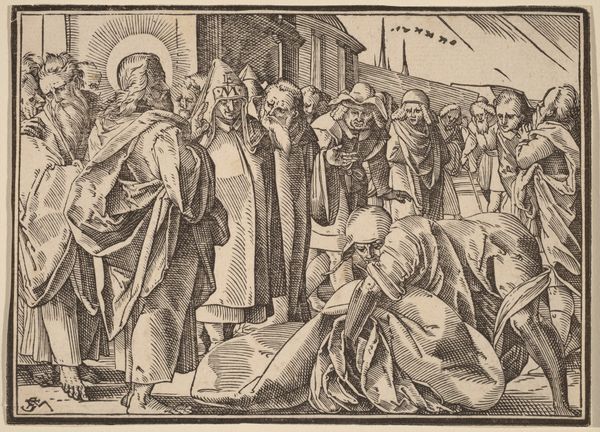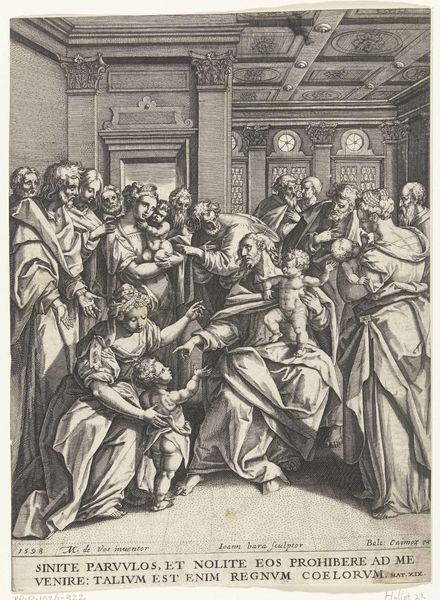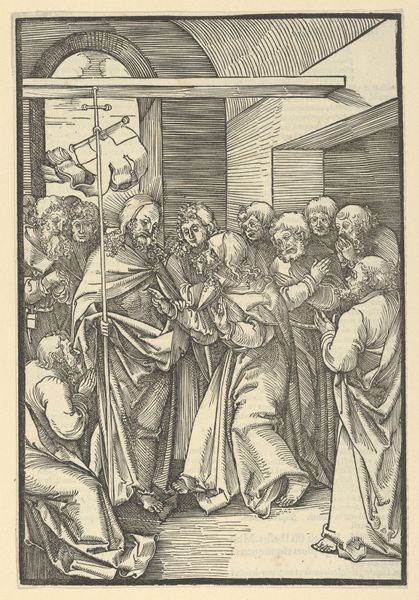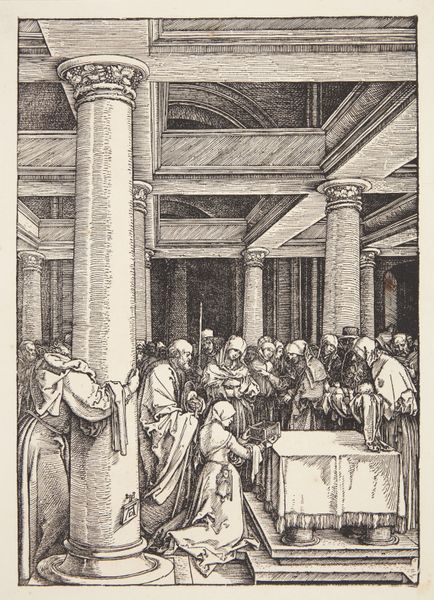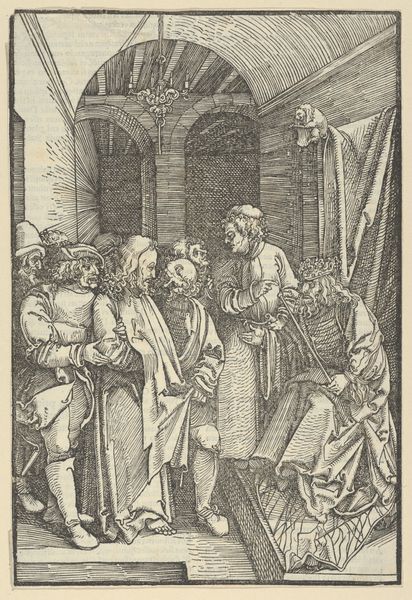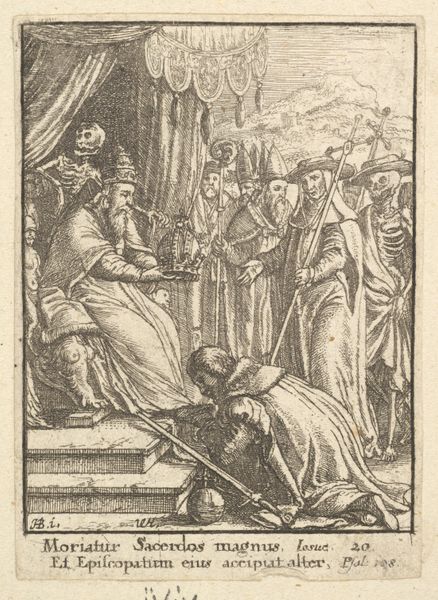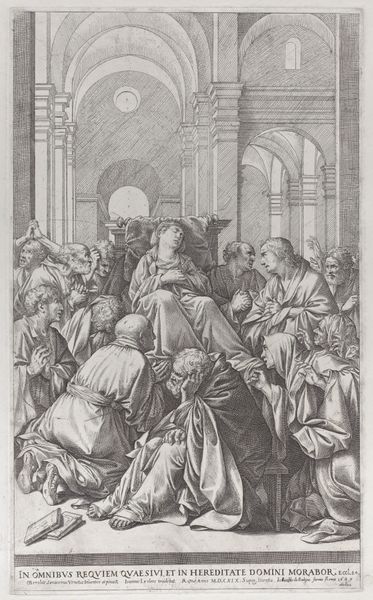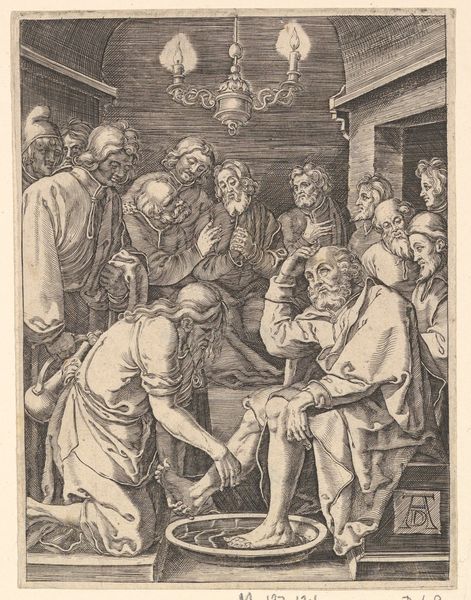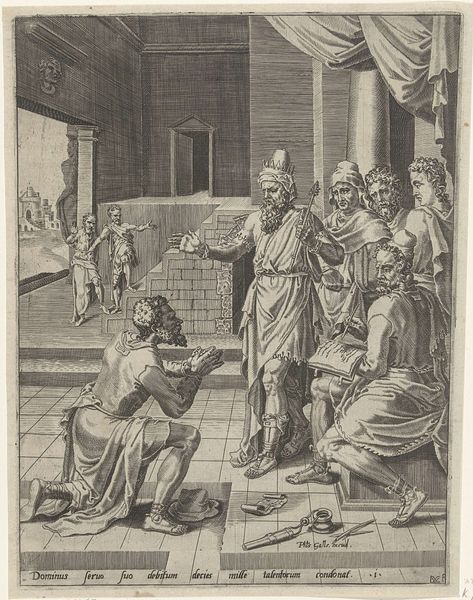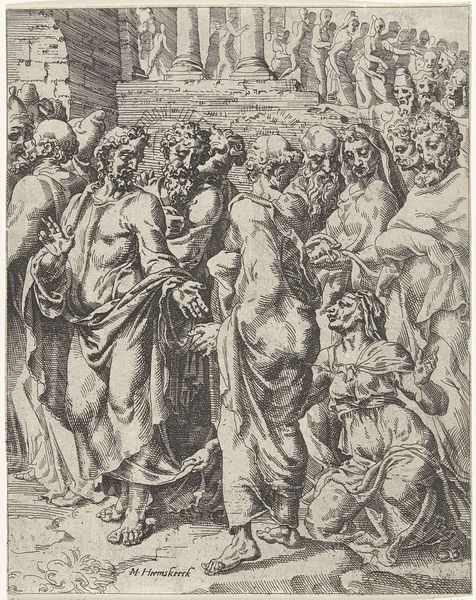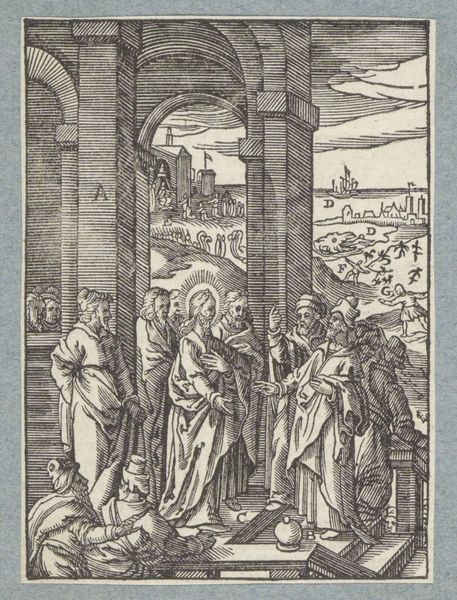
print, engraving
# print
#
figuration
#
line
#
history-painting
#
italian-renaissance
#
engraving
Copyright: National Gallery of Art: CC0 1.0
Editor: Here we have Francesco Denanto’s “The Raising of Lazarus,” a Renaissance engraving. The stark lines and the crowd's grim expressions give it a very serious, almost austere mood. What catches your eye when you look at this print? Curator: I immediately notice the sharp contrasts achieved through the engraved lines. Consider the labor involved: the meticulous process of cutting these lines into the metal plate, then the pressure and material of the printing press needed to transfer the image. This was not a quick or easily reproducible method, suggesting the value placed on the image itself and the message it conveyed. The very act of reproducing this image makes Lazarus’s raising into something almost mechanical. Editor: That's fascinating! I hadn't considered the actual *making* of the print in such detail. How does the social context play into this? Curator: Prints like these were commodities, circulated among a specific class of patrons who understood the visual language and narrative. Denanto is creating a service to Catholicism here; the value is inscribed in a moral, economic, and even political register. Also, note the almost stage-like setting – how does this speak to consumption, both visual and possibly in a performative, religious sense? Editor: So it’s not just about the miracle, but the role of art as a commodity with layered meanings? Curator: Precisely. It speaks volumes about the cultural and material conditions in which it was produced and circulated. Seeing beyond the purely devotional aspects and toward these means allows us to critically unpack its enduring impact. Editor: I’m now seeing so much more than just a Biblical scene; I'm considering the material conditions that enabled its creation and distribution. Thanks!
Comments
No comments
Be the first to comment and join the conversation on the ultimate creative platform.

